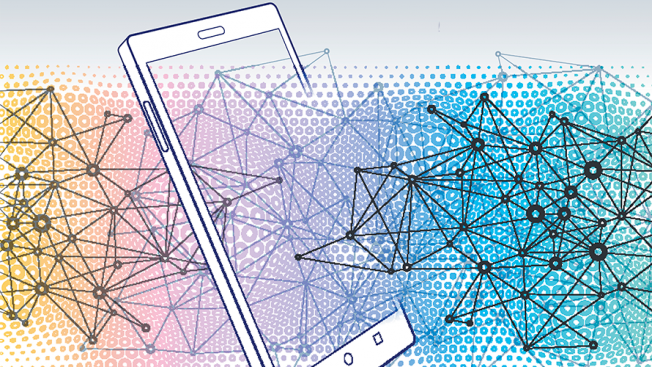When data-driven analysts prognosticate about industries like mobile advertising, they tend to be very … well, data-driven. They look at increases in ad spend in certain areas, movements from big companies in the space or investments in certain technologies. While there is certainly a place for data in understanding what’s next for mobile creative, some of us prefer to take a more holistic approach when it comes to looking at the future of our industry.
After observing hundreds of campaigns and seeing which “big ideas” clients are responding to, here’s where I think the future of mobile creative is heading:
1. Sophisticated user IDs will finally, truly personalize ads
You know when you go to contact someone who is in your phone, and their picture pops up? That was the first step to make your phone not just your number, but a visual representation of you–which is then reflected in your social, mobile world. Mobile hardware companies are now pouring dollars (and yuan, won and rupees) into user identification: facial recognition, thumbprint ID and anything else that would let your device quickly connect to you, its owner.
Avatars and animojis:
With the iPhone X’s True Depth camera system, you take a picture of yourself and create an augmented-reality animoji. Through Apple’s ARKit, developers and artists gain access to the face meshes that are generated for animoji. Now imagine what you can do with that very realistic-looking avatar. Mobile gaming companies could import avatars into games for a truly first-person experience. If advertisers were granted access, they could personalize ads by importing the avatar so that the user’s likeness was part of that ad.
Brands like Starbucks and Lufthansa have been successful with selfie ads, but it was all still manual–requiring participants to take a selfie and then upload it. In the new era, “avatar ads” are fully dynamic and automated, which lowers drop-off rate and introduces a surprise factor.
Reimagined mobile shopping:
Avatars in 3-D also can reimagine mobile commerce. Retail brands have already done interesting things with augmented reality, like “placing” a couch in your living room. But no one has yet been able to answer the consumer’s question, “How would I look in this dress?” With an avatar, you would pick out your size, put clothes on it, turn around for a 360-degree view, or zoom in for a closer look. That’s pretty darn close to real shopping.
Branded emojis:
Brands will continue to leverage the customizable emojis for iOS. With every new entertainment release that includes characters, like the superheroes in the Justice League, we’re going to see branded emojis that users can download and use in their daily communications with friends.
2. VR will be home to ‘product placement 2.0’
People are already spending so many hours a day on their phone, fully immersed in their mobile and social worlds. But it’s now clear that the two worlds will collide. The iPhone X’s infrared camera, with sensors and light projectors capable of perceiving depth, provides the high fidelity you need for a heightened sense of realism–similar to the promise of holographic TVs.
And, similar to how brands first started out with product placement on TV shows and movies, we will be able to insert brands and advertising messages to those worlds in a way that doesn’t “break” the environment. Say you’re playing a shooter or a racing game. You glance away from the action and see a billboard for Pennzoil–an ad just like those you see in real life. It complements your experience, instead of interrupting it, unlike the interstitials we see now that block you between levels.
Now imagine that instead of a billboard, Pennzoil sponsored your race car, and every time you win a race, you get a coupon. That not only adds value that the consumer wants and deserves, it now also lets you measure your ad campaign more effectively because you can quantify those engagement actions and track the coupon redemptions.
3. Augmented reality will save retail
Retailers spent about $450 million on AR and VR in 2017, but over the next four years, they are projected to spend as much as $3.2 billion showcasing their products, according to the IDC. This could mean 3-D product popup images, enabling a dress, pair of shoes or entire showroom to suddenly appear in 3-D. Or maybe customers scan items they see in a magazine and their phone navigates automatically to that ecommerce page. As such, AR will expand revenue by deepening their digital footprint and also bringing foot traffic back to brick and mortar retailers.
AR will also transform in-store experiences. We’ve all seen the “overlay” of product information, like calorie count or promotional offers in a grocery aisle. But what happens when you introduce the elements of exclusivity and scarcity–and then gamify it?
What if you could combine the excitement of Black Friday sales with the mass appeal and competition of Pokemon Go? Your brand or store could use your app to provide access to special sales that are invisible to everyday consumers. Or you could introduce a branded character or entertainment experience right in the middle of that aisle, and invite the user to play along to win rewards.
Mobile continues to expand the realm of possibilities for advertising creative, and at a mind-boggling pace. The industry’s ability to keep up with and leverage these advancements will ultimately determine whether advertisers remain relevant with an audience whose expectations will rise accordingly.








